(+/-)-BAY K 8644
Synonym(s):1,4-Dihydro-2,6-dimethyl-5-nitro-4-(2-[trifluoromethyl]phenyl)pyridine-3-carboxylic acid methyl ester
- CAS NO.:71145-03-4
- Empirical Formula: C16H15F3N2O4
- Molecular Weight: 356.3
- MDL number: MFCD00036697
- SAFETY DATA SHEET (SDS)
- Update Date: 2025-12-26 12:07:08
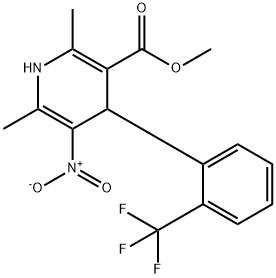
What is (+/-)-BAY K 8644?
Description
BAY K8644 (71145-03-4) is an L-type Ca2+-channel activator with positive inotropic and vasoconstrictive effects.
Chemical properties
yellow powder
The Uses of (+/-)-BAY K 8644
An active L-type, voltage-gated calcium channel agonist
What are the applications of Application
(±)-Bay K 8644 is an active Ca2+ slow channel agonist
Definition
ChEBI: Methyl 2,6-dimethyl-5-nitro-4-[2-(trifluoromethyl)phenyl]-1,4-dihydropyridine-3-carboxylate is a pentasubstituted dihydropyridine carrying methoxycarbonyl, 2-(trifluoromethyl)phenyl and nitro substituents at positions 3, 4 and 5 respectively as well as two methyl substituents at positions 2 and 6. It is a dihydropyridine, a methyl ester, a C-nitro compound and a member of (trifluoromethyl)benzenes.
Biological Activity
L-type Ca 2+ -channel activator (EC 50 = 17.3 nM). Has positive inotropic, vasoconstrictive and behavioral effects in vivo . Separate enantiomers also available ((4R)-1,4-Dihydro-2,6-dimethyl-5-nitro-4-[2-trifluoromet hyl)phenyl]-3-pyridinecarboxylic acid methyl ester and (4S)-1,4-Dihydro-2,6-dimethyl-5-nitro-4-[2-trifluoromet hyl)phenyl]-3-pyridinecarboxylic acid methyl ester).
Biochem/physiol Actions
(±)-Bay K8644 is a 1,4-dihydropyridine (DHP) derivative and an agonist for L-type Ca2+ channels. However, it′s enantiomers (-)-BAY k8644 and (+)-BAY k8644 have opposing functionality with respect to Ca2+ channels as high-potency agonist and low-potency antagonist, respectively. (±)-Bay K8644 increases influx of Ca2+ specifically at voltage-gated calcium channels. It constricts blood vessels and heart contraction.
in vitro
it was demonstrated that bay k 8644 prolonged the mean ca2+ channel opening time in heart myocytes and neurones of spinal ganglia. an experiment using rat heart ventricles demonstrated that bay k 8644, at the final concentration of approximately 1 pm, had strong positive inotropic effect when added to the perfusion fluid. moreover, the addition of bay k 8644 to the chronic ethanol treatment significantly reduced the electrophysiological signs of withdrawal in the isolated hippocampal slices. [2, 3]
in vivo
study in mice demonstrated that bay k 8644 significantly ameliorated the ethanol withdrawal syndrome. when experimental animals were administered with an acute injection of bay k 8644, the convulsive behavior of mice could be monitored to increase for 2 hours. in addition, bay k 8644 was also reported to ameliorate hypotension in endotoxin-shocked rats. it could lead to a 37% decrease in heart rate of endotoxin-treated rats and 39% decrease in control rats in a dose-dependent manner. [3,4]
Storage
+4°C
References
1) Schramm?et al. (1983)?Novel Dihydropyridines with positive inotropic action through activation of Ca2+ channels; Nature,?303?535 2) Yamamoto?et al. (1984)?Bay K8644 Differentiates between potential and receptor operated Ca2+ channels; Eur. J. Pharmacol.?102?555 3) Thomas?et al. (1985)?A dihydropyridine (Bay K 8644) that enhances calcium currents in guinea pig and calf myocardial cells. A new type of positive inotropic agent; Circ. Res.,?56?87 4) Shi?et al. (2009)?Induction of pluripotent stem cells from mouse embryonic fibroblasts by Oct4 and Klf4 with small molecule compounds; Cell Stem Cell,?3?568
Properties of (+/-)-BAY K 8644
| Melting point: | 166 °C |
| Boiling point: | 429.2±45.0 °C(Predicted) |
| Density | 1.3548 (estimate) |
| RTECS | US5655000 |
| storage temp. | 2-8°C |
| solubility | DMSO: 184 mg/mL |
| form | Yellow solid. |
| pka | -3.43±0.70(Predicted) |
| color | Yellow |
| Water Solubility | Soluble in DMSO at 20mg/ml. Also soluble in methanol or ethanol at 60mg/ml. Insoluble in water |
| Stability: | Stable. Incompatible with strong oxidizing agents. |
Safety information for (+/-)-BAY K 8644
| Signal word | Warning |
| Pictogram(s) |
 Exclamation Mark Irritant GHS07 |
| GHS Hazard Statements |
H315:Skin corrosion/irritation H319:Serious eye damage/eye irritation |
| Precautionary Statement Codes |
P264:Wash hands thoroughly after handling. P264:Wash skin thouroughly after handling. P280:Wear protective gloves/protective clothing/eye protection/face protection. P302+P352:IF ON SKIN: wash with plenty of soap and water. P305+P351+P338:IF IN EYES: Rinse cautiously with water for several minutes. Remove contact lenses, if present and easy to do. Continuerinsing. P332+P313:IF SKIN irritation occurs: Get medical advice/attention. P337+P313:IF eye irritation persists: Get medical advice/attention. |
Computed Descriptors for (+/-)-BAY K 8644
New Products
4,4-Difluoropiperidine hydrochloride tert-butyl 9-methoxy-3-azaspiro[5.5]undecane-3-carboxylate Indole Methyl Resin N-Isopropylurea N,N-Dicyclohexylcarbodiimide(DCC) MELDRUMS ACID 5-METHYLISOXAZOLE-4-CARBOXYLIC ACID Magnessium Bis glycinate Zinc ascorbate 1-bromo-2-butyne 2-acetamidophenol 9(10H)-anthracenone Erythrosin B, 4-Piperidinopiperidine 2-((4-morpholinophenylamino) (methylthio) methylene) malononitrile 2,4-dihydroxybenzaldehyde 3-(4-morpholinophenylamino)-5-amino-1H-pyrazole-4-carbonitrile Methyl 2-methylquinoline-6-carboxylate 2,6-dichloro-4-nitropyridine 4-Bromo-2-chlorobenzonitrile 2-(benzylamino)acetic acid hydrochloride 4-(tert-Butoxycarbonylamino)but- 2-ynoic acid 3,4-dihydro-2H-benzo[b][1,4]dioxepine 1-Phenyl-1-cycloprppanecarboxylicacidRelated products of tetrahydrofuran
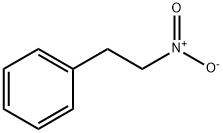
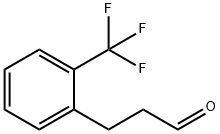
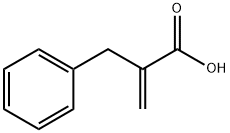


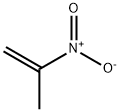

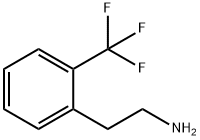
You may like
-
 Bay K8644 >95% CAS 71145-03-4View Details
Bay K8644 >95% CAS 71145-03-4View Details
71145-03-4 -
 (±)-Bay K8644 CAS 71145-03-4View Details
(±)-Bay K8644 CAS 71145-03-4View Details
71145-03-4 -
 3-(4-amino-1-oxoisoindolin-2-yl)-1-methylpiperidine-2,6-dione 98%View Details
3-(4-amino-1-oxoisoindolin-2-yl)-1-methylpiperidine-2,6-dione 98%View Details -
 614-19-7 98%View Details
614-19-7 98%View Details
614-19-7 -
 20677-73-0 (2,2-diethoxyethyl)methylamine 98%View Details
20677-73-0 (2,2-diethoxyethyl)methylamine 98%View Details
20677-73-0 -
 3-(4-(hydroxyamino)-1-oxoisoindolin-2-yl)piperidine-2,6-dione 98%View Details
3-(4-(hydroxyamino)-1-oxoisoindolin-2-yl)piperidine-2,6-dione 98%View Details -
 57381-49-4 2-bromo-4-chlorobenzonitrile 98%View Details
57381-49-4 2-bromo-4-chlorobenzonitrile 98%View Details
57381-49-4 -
 4,6-dichloropyrimidine-5-carbaldehyde 98%View Details
4,6-dichloropyrimidine-5-carbaldehyde 98%View Details
5305-40-8
